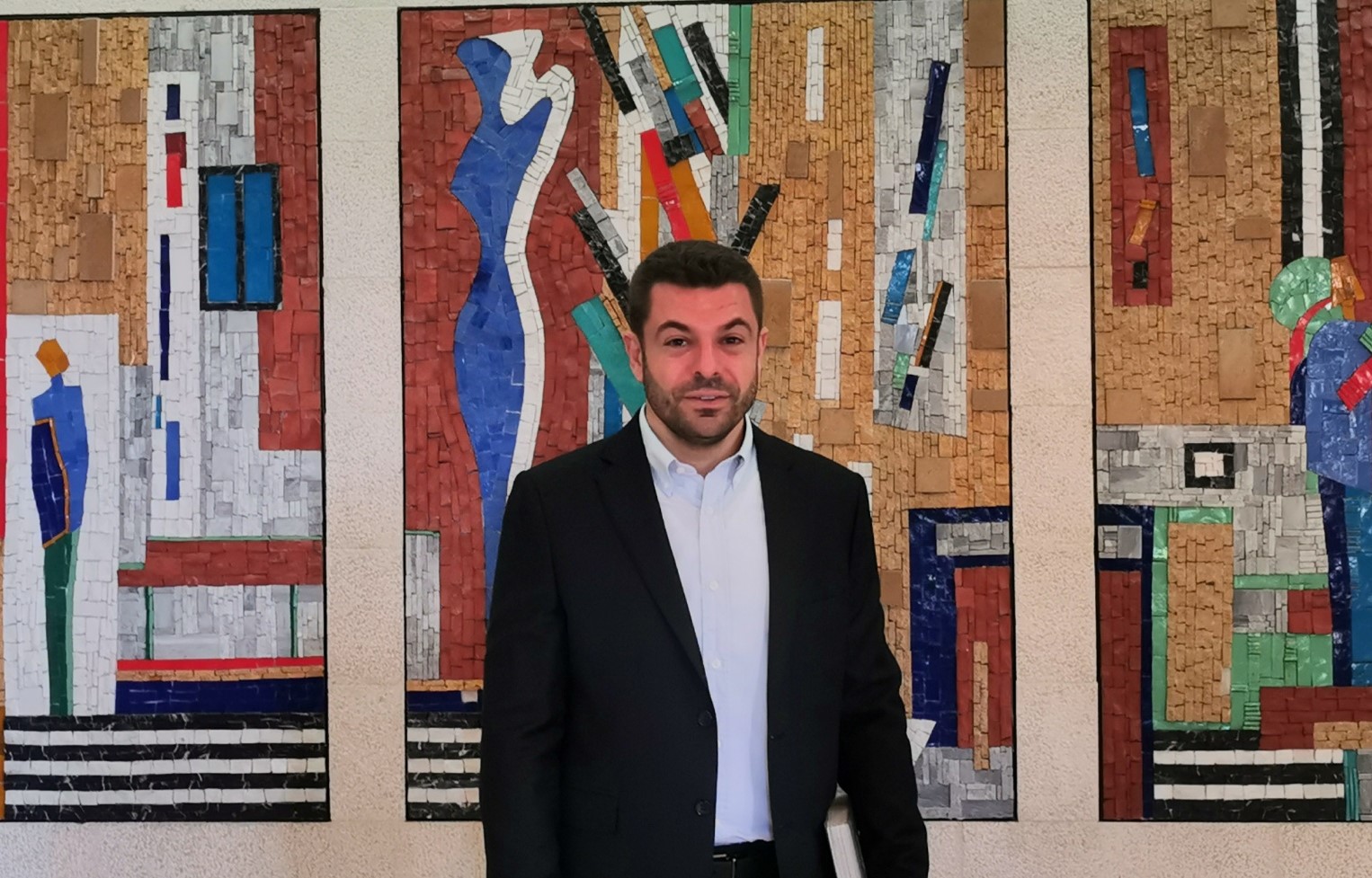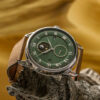Antonio Frangieh, Mayor of Zgharta -Ehden Municipality & President of Horsh Ehden Nature Reserve Committee, young, dynamic and full of innovative ideas, is passionate about archives and nature, which he tells us hold the memory and history of a country and which must be carefully preserved. And it is in this quest for memories that he wanted to visit the offices of Prestige to discover its archives and the way in which they are listed. Indeed, the reconstruction of Lebanon from 1992 to 2019, paraded on the pages of Prestige, as well as the golden age of independence till the year 1974. It was there that he found an interview granted in Paris to Prestige by his compatriot the famous painter Saliba Doueihy. He carefully kept it to be published later on Zgharta-Ehden municipality’s website.
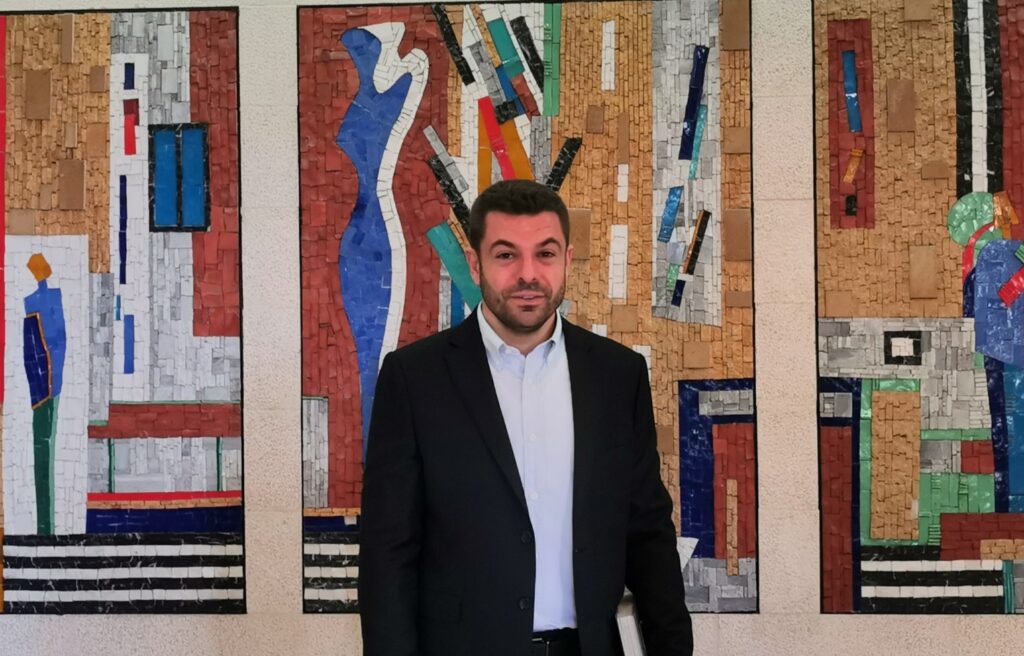
says Antonio Frangieh in front of the Mosaic of Anachar Basbous at the Prestige offices.
Horsh Ehden Nature Reserve
A nature reserve rich in biodiversity and habitat
The Horsh Ehden nature reserve was created under law number 121 of March 9, 1992. But it is in 2022 under the direction of Antonio Frangieh its new president that the reserve will take off more dynamic and more modern… Prestige met with Antonio Frangieh, in the offices of the magazine offices, to discover the treasures and activities of the Horsh Ehden nature reserve.
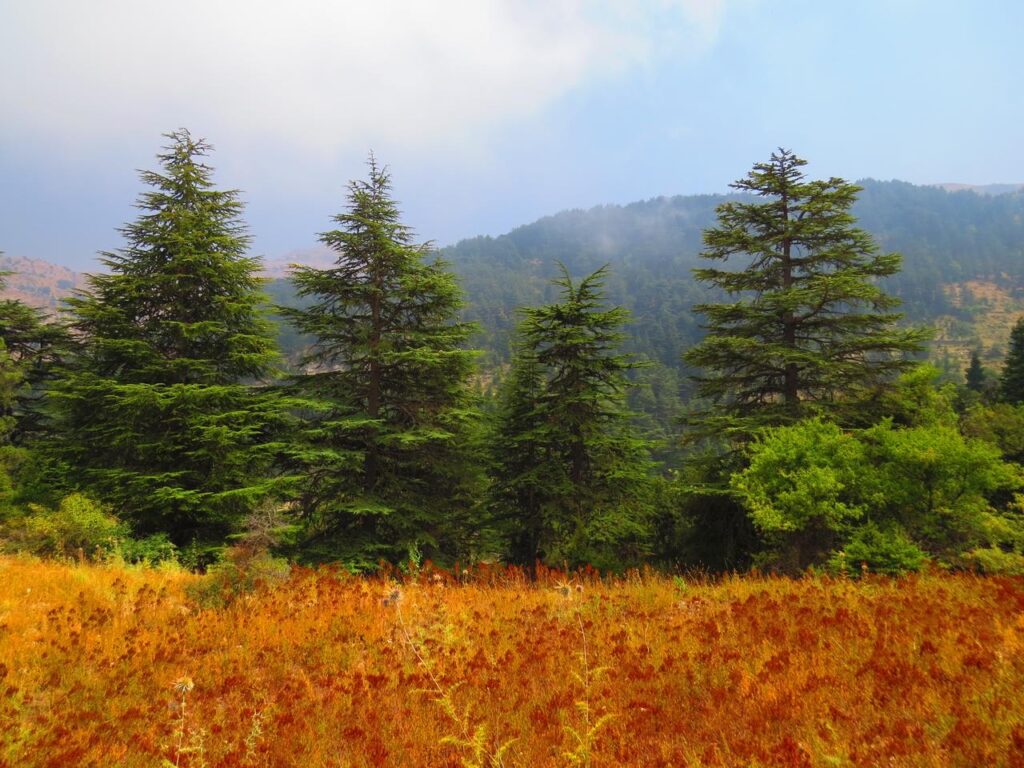
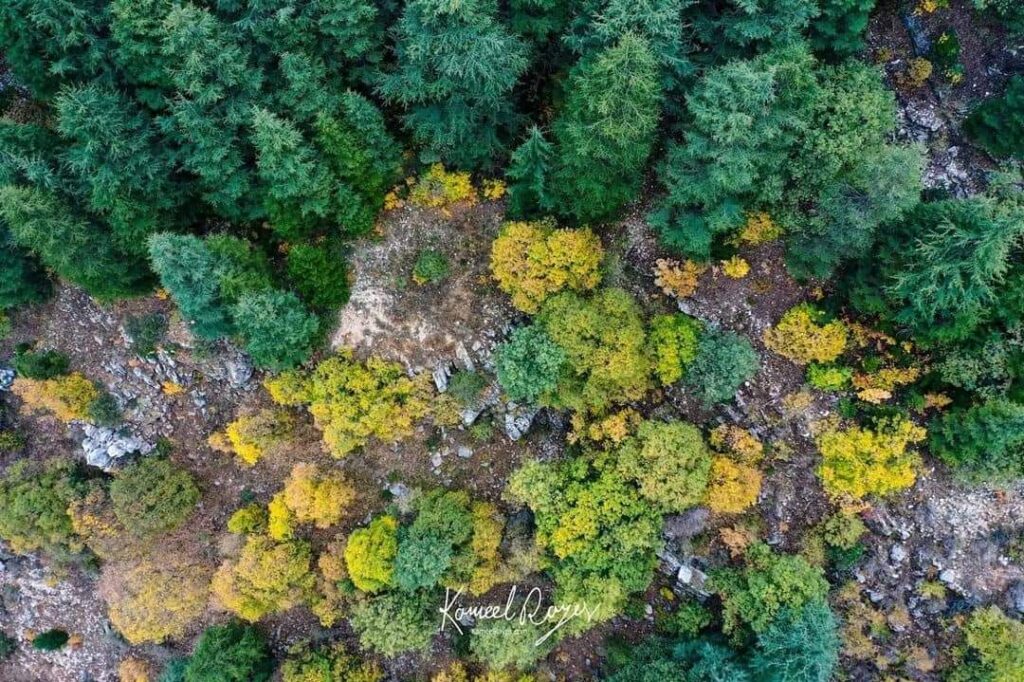
Tell us about the treasures of the reserve.
The reserve has a surface of 1700 hectares on an altitude which varies between 1200 and 2000 meters. Several water sources flow there. It is trich in biodiversity and habitat.
The reserve includes more than 39 genera of trees, 1000 species of plants, 26 genera of mammals, 168 species of birds, 23 genera of amphibians and reptiles as well as 300 genera of fungi. Visitors can practice activities there all year round: Climbing, mountain biking, Hiking, and you can even book your guide for the walk, and even take artistic pictures because the view is breathtaking…
The most beautiful seasons for the visit are in autumn and spring.

US Ambassador Dorothy Shea, Reserve Director Sandra Koussa Saba and Minister Rony Araiji.
How to preserve and develop Horsh Ehden Nature Reserve?
To develop the reserve soundly and sustainably, it is essential to have a modern development plan. The plan already put in place in the year 2000, i.e. 22 years ago, is no longer relevant. To do well, you must always hire specialized and competent people for the project, which is the case for everyone who works on the reserve. For example, Robert Frangieh helps us with public relations and contact with the media. While with Dr Sana Abou Dib we are in the process of setting up a new management plan for the reserve. It is equally important for us to know how to take advantage of cutting-edge technology.
For example, we plan to give electronic bracelets to people who enter the reserve to find them easily in case they get lost. We are also studying to put an electronic guide at the entrance of the reserve that the visitor can scan, which will allow him to follow his chosen route for the hike. Minister Raoul Nehme, the rotary and jouzour loubnan Ehden have already inaugurated the reforestation project which is to plant 10,452 cedars in the reserve. A digital plan of these plantations will allow everyone to easily find the cedar planted in the name of a specific person or association.
Next to the forested area where the visitors follow all the rules of a reserve, there is still the area called Blata and Nawahir, which is not yet planted with trees and where there are plans to develop ecotourism. The plan is almost ready, but has not yet sufficient funding.
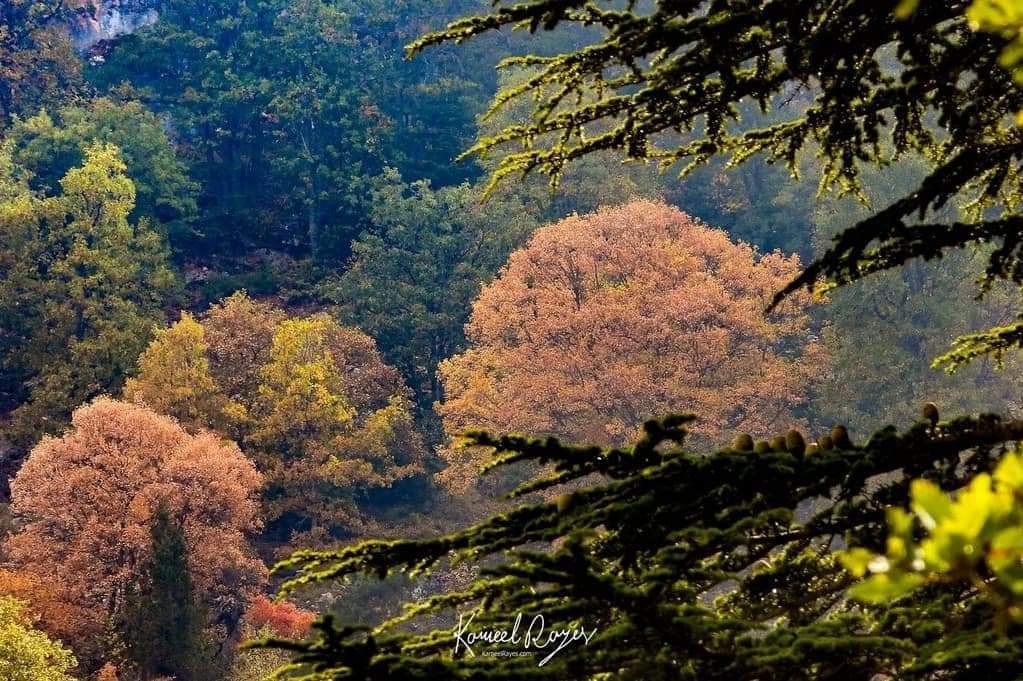
What about this new asphalt road which has caused a lively controversy?
This road borders the reserve and is also vital to the reserve. In addition to allowing visitors to easily reach the reserve, it gives quick access to firefighters in the event of a fire as well as to first aiders in the event of an accident.
And to conclude this interview, Antonio Frangieh surprises me with a very nice proposal:
We plan to appoint a Reserve Ambassador each year. For this year we would like, Marcelle Nadim, to invite you to be the ambassador of the Horsh Ehden nature reserve.
It is an honor for me to be appointed Ambassador of the Horsh Ehden Nature Reserve and to be able to collaborate in the development of the reserve herewith with the aim of preserving nature in Lebanon for generations to come.
Interview conducted by Marcelle Nadim
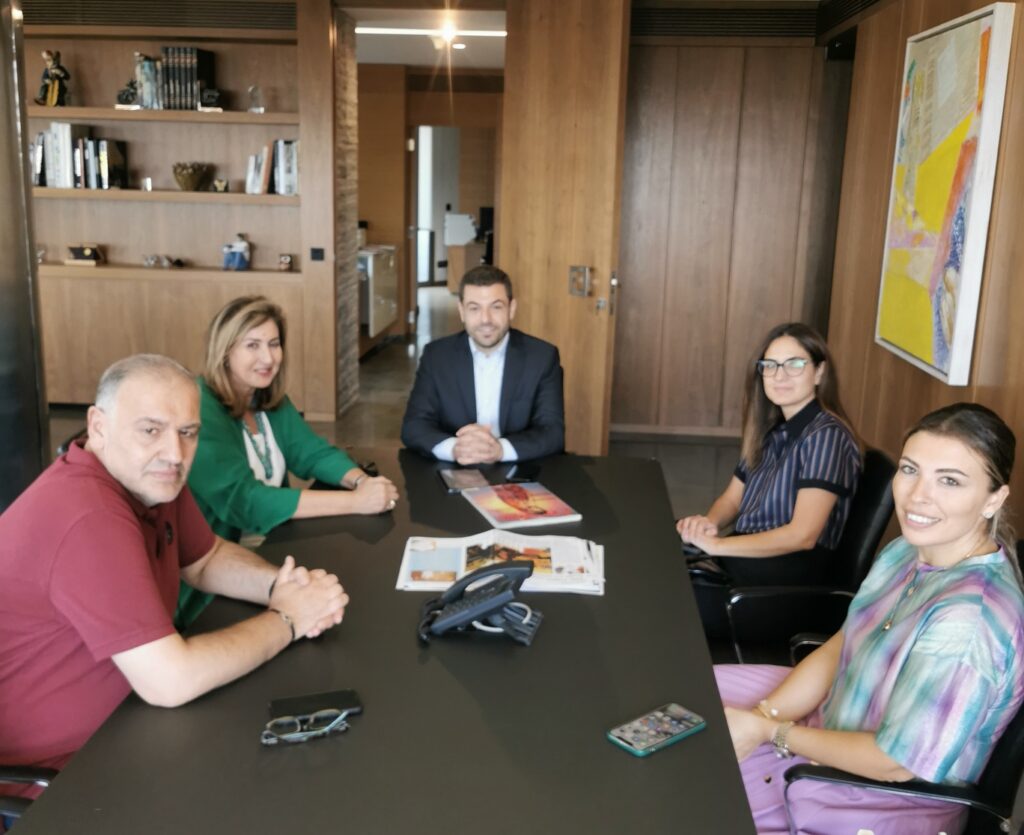
the ambassador of the reserve in the presence of Robert Frangieh, and Dr Sana Abou Dib.


